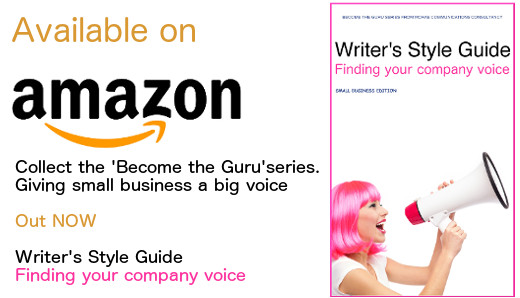The creative brief is the first step towards a successful communication campaign.
Picture the scene. You have been asked to create a brochure! OK, sounds simple enough. You fire up your computer, sit down to work, then … nothing. You scratch your head for a moment asking yourself all the logical questions. Who is this brochure aimed at? What is it meant to achieve? How many pages does this brochure have? What’s its shelf life? How will it be distributed? When is the deadline? Get the idea?
Of course all of these questions, and more, should be answered by the creative brief. I say ‘should’ because in all too many companies, neither time nor credence is given to the briefing process– and therein lies all sorts of problems. Mainly of a ‘wasting time and money’ nature.
For some reason, many companies shy away from the process of briefing, believing this process to be entirely in the remit of the Ad Agency. Wrong! Yes, Ad Agencies do use them, but briefing doesn’t stop there.
I have often heard heads of departments say, “I don’t have time to sit down and write out a brief, or fill in a form, I just need a brochure by next week.” If this is the case, then this head of department clearly doesn’t have the time for you to rewrite your copy if it’s aimed at the wrong audience or missing the mark in terms of messaging.
It doesn’t matter whether you are embarking on a marketing communications piece or even an editorial feature – you need a brief. Granted in the editorial environment, your briefing may take shape at the feature list planning stage, but you, as the writer, will know what questions you need answered before you forge ahead with your research, interviews and article.
At the start of any new project, even if you are an in-house writer on a small internal project, ask for the brief first so you can digest what is required and see if all the questions that you need answered are contained within that vital document.
Conversely, as the company requiring the services of a creative or marketing professional, you should have a clear understanding of what you want to achieve and convey this information as it will impact the quality of the product you receive from the creative. However, please do not be tempted to “direct the creative” on how they should achieve these objectives. That is what you are paying your writer or designer to do.
Why is the brief so important?
Apart from anything else, the brief sets the expectations of the client or stakeholder.
The depth of detail required in the brief will vary depending on the complexity of the deliverables, but on a general level it will answer key questions about the nature of the project – the ‘who’, ‘what’, ‘where’, ‘why’ and ‘how’.
A good creative brief will define desired results, answer questions and save time and money. In an ideal scenario, this brief should be signed off by all stakeholders at the start of the process, ensuring that everyone is on the same page. Of course, even with a watertight brief that has been signed off in triplicate, you will get some changes from time to time, and you will have to remain flexible where appropriate. Alternatively, send a friendly email to all those involved – ensuring that everyone does actually agree with any proposed changes before you invest time in the project and indulge the whim of someone who had a mad idea at 3 am. It happens!
If the company you are working for has argued they don’t have time to create a brief, the best idea is to create a template yourself and speak to the person either face-to-face or on the phone, asking the questions you need right from the start.
I would caution, however, one-size brief does not fit all!
I have provided a sample list of questions for you, so next time you are left scratching your head you will have somewhere to start from. Use these to create your own creative or marcoms brief, but be mindful that you may have slightly different requirements or questions depending on your role and industry. If you are working in an organisation that does not include this as part of the creative process, I encourage you to be a facilitator of change – especially if you are the Marcoms Manager and in a position to make positive change. There may be those who grumble in corners about the extra work, but if it means more targeted copy, less review time and a greater ROI, then everyone will be happy.
If you have any further questions about briefing and the challenges you face, whether you are a freelancer or a full-time in-house writer, send me an email and I’ll do my best to help you out.
Marketing Communications Generic Brief
In the first instance get an idea of the following:
- Who/what department/stakeholder has requested the project?
- Why have they requested the project? (ie, launch of new product or solution?)
- What is the objective?
- What is the timescale/deadline?
- What is the budget?
Then gather more information such as:
- Project overview: This should be a comprehensive paragraph providing an overview of the project as a whole. Why is there a need to create a new brochure or multimedia presentation? What is the function? How will success be measured/ROI?
- Target audience: Who is your target audience? What are their demographics? Who is the target? What do they care about? What are their pain points? What perceptions do they have? For larger campaigns it may be useful to choose a typical user and profile this user in detail. Include occupation, age range, gender, and any other relevant information to the project. Profile more than one if applicable. What is the target audience’s level of awareness of the product or solution? Do they need to be educated or are they familiar/experts already? Where are they on the buyer’s journey?
- Challenges/perceptions/hot buttons: Does your target audience have preconceived ideas about your product? Perhaps they think it’s cheap, or too expensive. Perhaps if a product has reduced in size, there may the perception that something is missing, or the quality isn’t there. This is useful information as you can target your tagline or copy in such a way that it addresses these perceptions. What obstacles are there to your prospective customer actually buying product?
- Competitive landscape: Is the product/solution going to compete with other similar solutions? How do your competitors position themselves in the market?
- Key differentiators: Why should anyone buy your product? What makes it different or better than your previous products or anyone else’s? (Remember to be careful here – you don’t want to cannibalise your other offerings)
- Key messaging: If you wanted your audience to learn or remember one key point about this product, what would it be? You should have no more than 3 supporting messages because your audience will not remember anything if you throw in every single thing that is amazing about this product.
The above points are more from a broader marketing/marketing communications perspective. For the creative brief you will of course need an understanding of all of the above. Perhaps this brief has come to you from Marketing. Now it’s down to your team or you yourself to come up with the creative. You will have slightly different questions you need answered.
Creative brief
- Project title:
- Project owner:
- Overview: Project information, goals, measurable objectives
- Deliverables required: Is it a one-off poster or brochure, or a complete communication campaign? Is the best format print, websites email campaigns? It’s generally down to creative to decide, for example, whether a fact sheet and an email campaign really is the best way to convey the message, or whether a webinar with follow-up notes is a better way to go.
- Resources required: photography, designers, copywriters, multi-media agency?
- Primary audiences: Who are they? How will they use this brochure or website? What should be avoided in talking to this audience? What must be mentioned when talking to this audience? Will the audience require translations?
- Hierarchy of messaging: Features, Benefits and Value Propositions: Prioritise the key features and/benefits and illustrate the key differentiator. Outline how it compares to the competition. What’s the one sentence that summarises its unique value? Other key points? Does it vary change according to different markets in different parts of the world?
- Tone/voice: authoritative, friendly, professional, casual?
- Imagery: As above, lifestyle/mainstream, conceptual, technical?
- Brochures: Considerations such as number of pages? Any restrictions or requirements for the format? What paper weight? Full colour process or two-colour? Word count per page?
- Production and distribution: Online or printed and distributed? Does timeline need to factor in translations and printing time?
- Budget and schedule: Has a budget been approved? When is the deadline/launch date?
- Sign off process/stakeholders: How many rounds of review will you go to? Who needs to be involved in the sign-off loop?
Of course these are just suggestions. You may have your own questions you would like to add. Ultimately, the more information you have to hand at the start of the project, the more equipped you are to create a fine-tuned, targeted communication solution, and the easier it will be to demonstrate the value every writer and designer brings to the communication process.
 Send to Kindle
Send to Kindle

